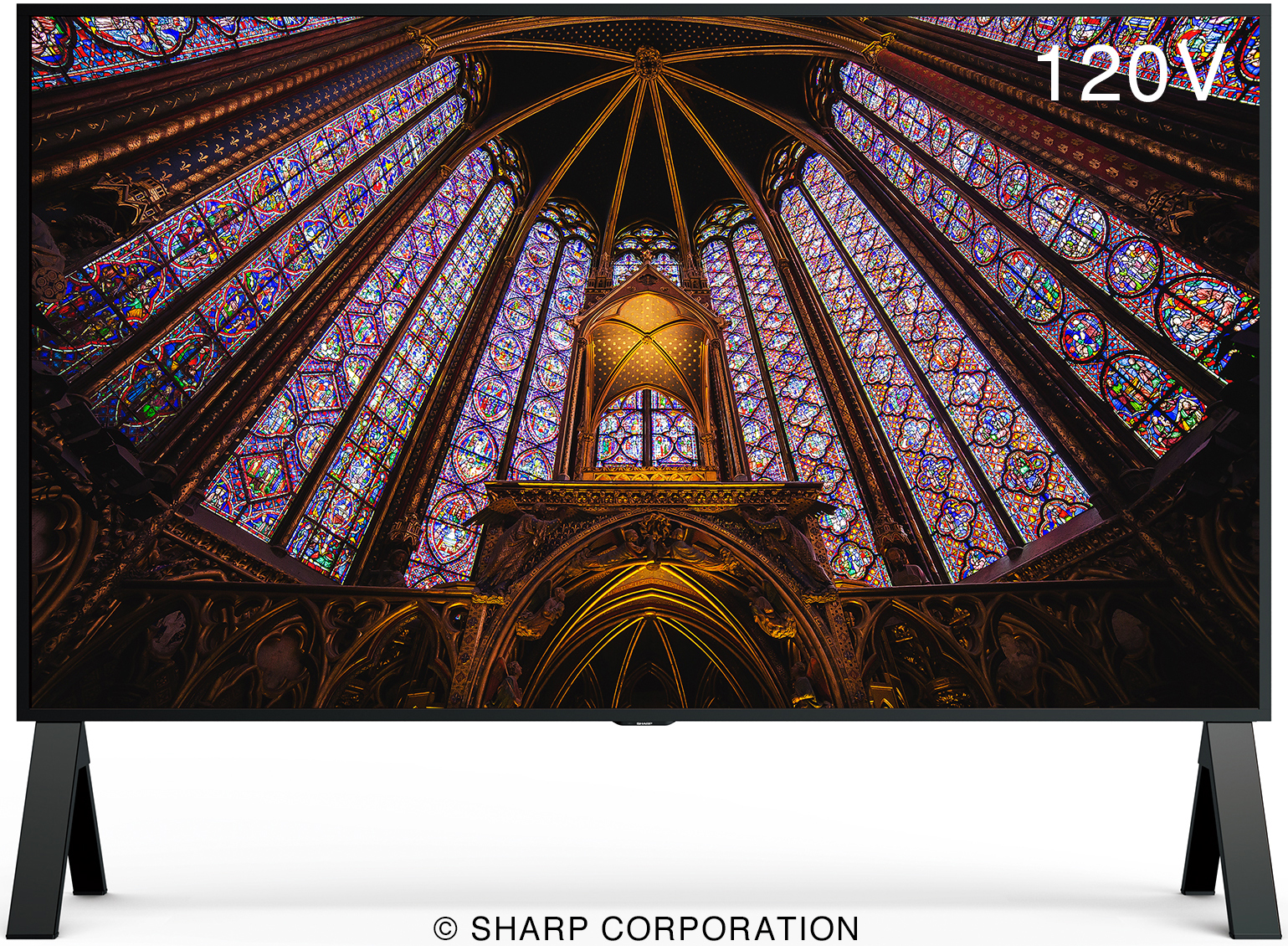Sharp Unveils New 120-Inch 8K Display: Up To 120Hz, HDMI 2.1, 2048 Dimming Zones
Sharp has announced its next-generation ultra-large display featuring an 8K resolution, advanced backlighting with 2048 local dimming zones, and an HDMI 2.1 input. Given its dimensions, the Sharp 8M-B120C is designed primarily for commercial applications, but users with large homes and deep pockets can certainly use it for gaming and home entertainment.
The Sharp 8M-B120C is based on a 120-inch UV2A II LCD (presumably IPS/IGZO) panel featuring a 7680x4320 resolution, 600 nits typical brightness (i.e. peak brightness in HDR mode is considerably higher), a 3500:1 contrast ratio, a 6 ms GtG response time, an up to 120 Hz refresh rate (albeit only for 4K content), and 176 degree / 176 degree horizontal / vertical viewing angles. The display uses a direct LED backlight featuring 2048 LEDs for enhanced contrasts. Given the display’s vast dimensions and power consumption, the unit is rated for up to 16 hours of continuous operation.
Sharp says that the 8M-B120C monitor can reproduce 1.07 billion colors and is designed to cover a significant portion of the ITU-R BT.2020 color gamut. Meanwhile, to make the colors look more vivid, the 8M-B120C has a little better representation of red than defined by the BT.2020, according to the company. The display supports HDR technologies, such as HLG.
Being the first company to release its 8K display over five years ago, Sharp has been gradually improving its panels featuring a 7680x4320 resolution as well as displays and televisions. When compared to predecessors, the Sharp 8M-B120C supports a higher typical brightness (600 nits vs. 400 nits), a faster response time (6 ms vs. 8 ms), and an HDMI 2.1 input that will make the unit compatible with upcoming consoles, players, and other equipment.
While the Sharp 8M-B120C is not a television, it does support the company’s super-resolution technology used on the company’s Aquos 8K TVs that upconverts content to the panel’s native resolution as well as enhancing its quality. Furthermore, the display can also playback music and video files.
As far as connectivity is concerned, the Sharp 8M-B120C is equipped with an HDMI 2.1 input (which supports 4Kp120 and 8Kp60 formats over a single cable), four HDMI ports, a D-Sub (VGA) connector for a PC, and a 3.5-mm stereo audio input. The device also has a 100 Mbps Ethernet as well as two USB 3.0 ports.
Premium video quality offered by the Sharp 8M-B-120C is accompanied by a Dolby Audio-badged audio subsystem featuring four 10-W speakers as well as two 15-W speakers. The LCD also has analogue and optical audio outputs.
Get Tom's Hardware's best news and in-depth reviews, straight to your inbox.
Featuring a 120-inch diagonal size, the Sharp 8M-B120C is enormously large and measures 107 x 32 x 78 inches (2717 × 805 × 1979 mm). It is also heavy: it weighs 454 pounds (206 kg) with it stand.
Sharp plans to start taking orders on its 8M-B120C display in late September and at least initially will make them to order. Recommended pricing of the product has not been announced, but we are certainly dealing with a premium LCD that will be priced accordingly.

Anton Shilov is a contributing writer at Tom’s Hardware. Over the past couple of decades, he has covered everything from CPUs and GPUs to supercomputers and from modern process technologies and latest fab tools to high-tech industry trends.
-
Endymio >> "Featuring a 120-inch diagonal size, the Sharp 8M-B120C is enormously large and measures 107 x 32 x 78 inches (2717 \00d7 805 \00d7 1979 mm)...."Reply
The display looks a bit thick from that side-angle shot, but surely it isn't 32 inches deep? I'm guessing that's the depth of the base, not the panel? -
JOSHSKORN At 120", can you even tell the difference between 4K and 8K? Between 1080p and 4K, yes, at around 55" or so, I believe, but I believe that was a big jump between 720p and 1080p, I imagine being able to tell the difference between 4K and 8K is an even greater jump.Reply
